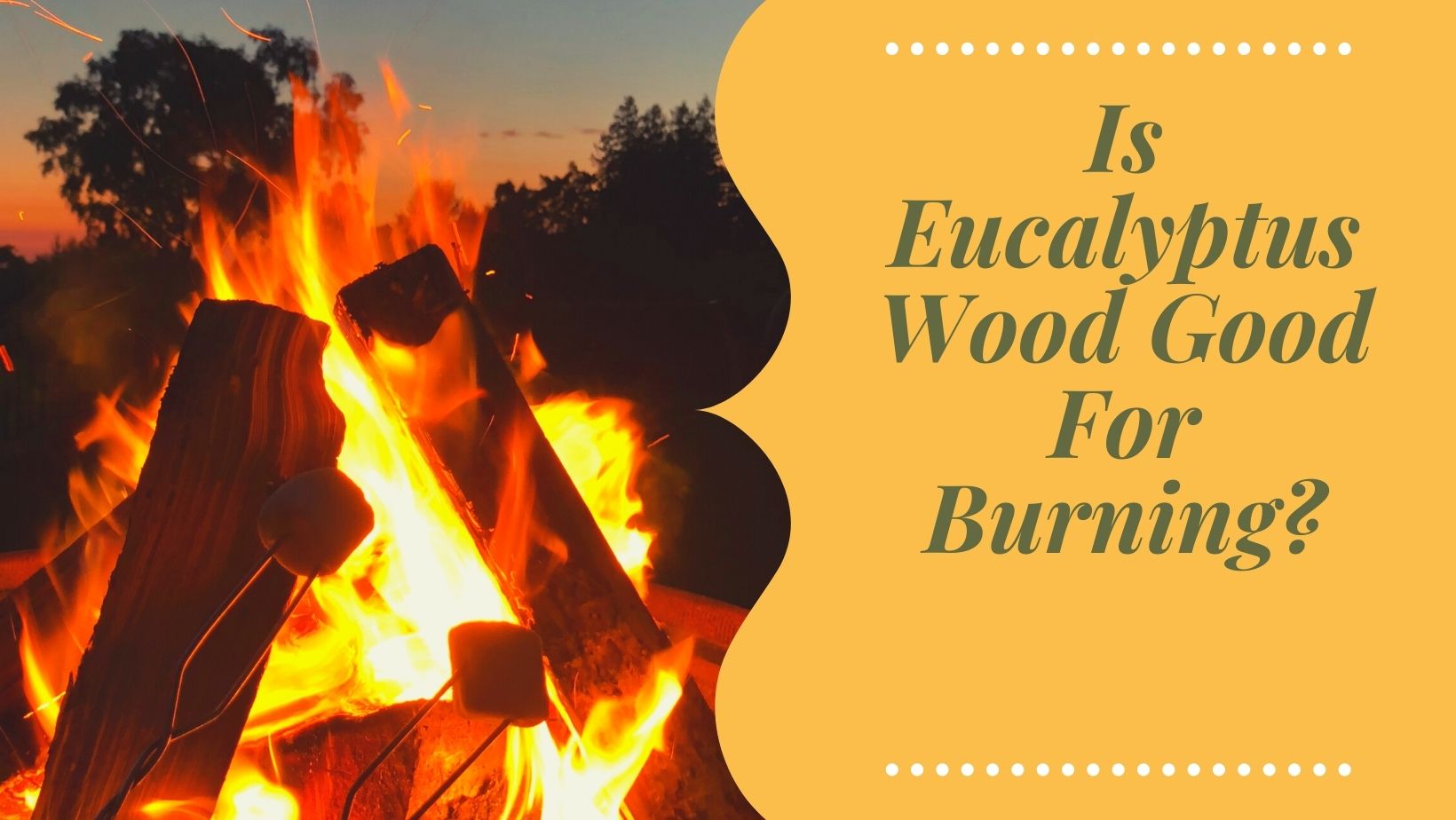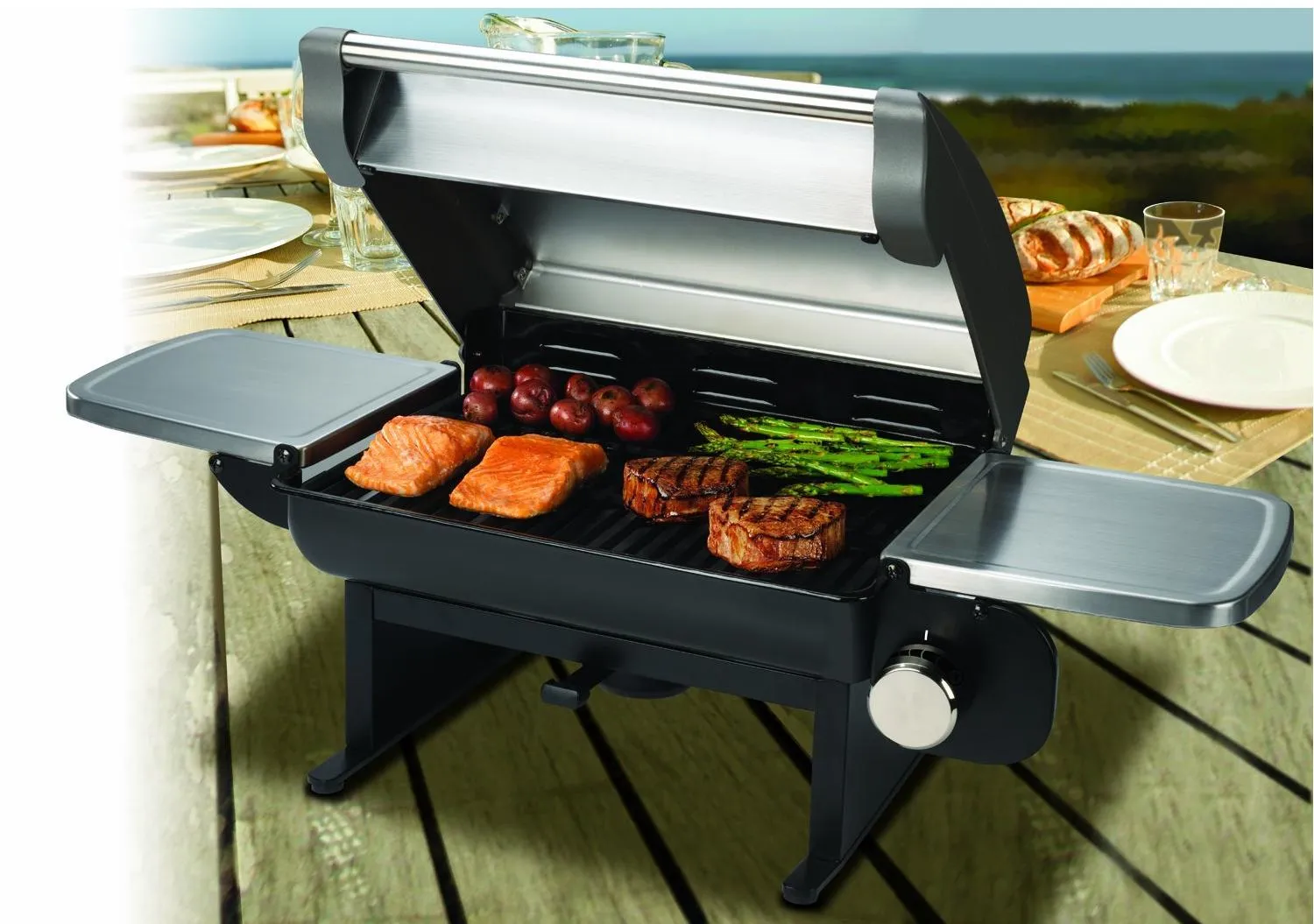
Burning Eucalyptus Firewood: Is Eucalyptus Wood Good For Burning?

Using wood as fuel for heating and cooking is as old as man. Because of its rapid growth, eucalyptus became an attractive fuel and was planted for that reason and for that purpose.
Today, besides the traditional fireplace or cookstove uses, eucalyptus wood is chipped and used as biomass fuel in the generation of electricity.
It was suggested in a 1903 Scientific American article that because of its rapid growth and size, eucalyptus would replace other fuels such as coal in California.
Fuels from petroleum were entering the mass market at this time and soon would replace most wood sources. Still, most homes used wood for fuel and industry used wood in its steam engines.
How Well Does Eucalyptus Burn?
Eucalyptus wood burns well and is a good choice for wood burning stoves, fireplaces and outdoor cooking. This is due to its high oil content. The oils in the wood help to make it more flammable and can give the wood a longer burn time.
When compared to other types of wood, eucalyptus can burn for a longer period of time and produce more heat.
To burn eucalyptus wood effectively, it is important to ensure that the wood is properly seasoned. Freshly cut eucalyptus wood can have a high moisture content, which can make it difficult to light and maintain a fire.
To season the wood, it should be allowed to dry out for several months before use. Once the eucalyptus wood is properly seasoned, it can be used in a variety of settings to create a hot, long-lasting fire.
In a fireplace or wood-burning stove, the wood can be placed on the grate and lit using kindling or newspaper. The wood will burn steadily, producing a consistent heat and vibrant flames due to the oil content.
However, it’s also important to note that the burning characteristics of eucalyptus wood can vary depending on a few factors. Here are some factors that could affect its burning:
-
Age and seasoning: Freshly cut eucalyptus wood contains a high moisture content and will not burn as well as seasoned wood. Seasoned wood, on the other hand, has had time to dry out and will burn more efficiently.
-
Diameter of the logs: Larger logs will burn longer than smaller logs because they have more mass and take longer to burn through. However, larger logs may be more difficult to light and may produce more smoke when they are first ignited.
-
Humidity and temperature: Eucalyptus wood burns best in dry conditions. If the wood is too wet or the air is too humid, it may be more difficult to get the wood to ignite and maintain a fire. Similarly, if the temperature is too cold, it may be more difficult to get the wood to ignite and stay lit.
-
Species of eucalyptus: Different species of eucalyptus can have different burning characteristics. For example, some species may produce more heat and burn longer than others.
Frequently Asked Questions About Burning Eucalyptus Wood
Is Burning Eucalyptus Wood Toxic?
Eucalyptus wood is not toxic when burned. It is generally considered to be safe to burn in a fireplace or wood stove. However, there are a few important considerations to keep in mind.
First, it is important to note that some species of eucalyptus trees produce oil that can be toxic if ingested. This oil is present in the leaves and bark of the tree, but not in the wood itself. Therefore, burning eucalyptus wood should not pose a risk of toxic exposure.
It’s also important to note that Eucalyptus wood produces a lot of smoke when burned, which can be irritating to some people. This is due to the high levels of volatile oils present in the wood, which are released when it is burned. If you are sensitive to smoke, you may want to avoid burning eucalyptus wood indoors or use it in moderation.
Also, due to its high oil content, some wood stove distributors and chimney sweep companies do not recommend using eucalyptus as firewood.
Overall, while eucalyptus wood is generally safe to burn, it is important to use caution and follow proper safety guidelines to avoid any potential risks.
Can you Cook Over Eucalyptus Wood?
While eucalyptus firewood is excellent for use in a fireplace, it cannot be used to smoke or grill.
Can You Burn Eucalyptus Wood Indoors?
It is generally not recommended to burn eucalyptus wood indoors. Eucalyptus wood produces a lot of smoke and can release volatile organic compounds (VOCs) into the air when it is burned. These VOCs can be harmful to humans and pets when inhaled.
Additionally, eucalyptus wood can burn very hot, which could potentially be a fire hazard.
If you want to burn wood indoors, it is best to use a wood that is known to be safe and produce minimal smoke, such as hardwood or oak. These types of wood will burn more slowly and produce less smoke, which is safer for indoor use.
Is Eucalyptus Wood Good For Burning?

Wood from most eucalyptus species makes good fuel. It burns hot with a strong flame. And (just in case you were wondering) burning eucalyptus is not poisonous. However, due to its high oil content, some wood stove distributors and chimney sweep companies do not recommend using eucalyptus as firewood.
[wpsm_quote author="" float=“left” width=“34%“]Eucalyptus burns brightly and has a refreshing fragrance. It is equal to oak as firewood and is better than other natural California wood. The best fuel comes from ten-year-old trees.[/wpsm_quote]
People who live in areas where eucalyptus is prevalent have been burning it for ages without issues. If you’re worried about it producing too much heat, experts recommend that you burn it in combination with other firewood.
One of the other downsides of using eucalyptus as firewood stems from its difficultness to split. Newly felled eucalyptus is difficult to split. The best time to split it is 5-7 days after felling. After this period, small cracks form in the wood, helping you to “read” it and hence make splitting easier.
However, don’t allow the wood to completely dry before splitting it. Splitting dry firewood is exceedingly difficult!
Growing Eucalyptus for Firewood
Groves of five years will produce 50 to 60 cords while groves of ten years will supply 80 to 150 cords. (How much does a cord of wood weigh?)
The quality of the soil, irrigation practice and maintenance will vary the size of the yield. The cost of cutting the grove is determined by the age of the tree and the type of species. In 1908, it took one-half of the market price to cut and stack wood for sale.
For so many years in southern California, firewood came solely from blue gum trees. This area was virtually treeless and eucalyptus groves were planted to service the need. In 1908, this was said about the firewood industry.
[wpsm_quote author="" float=“none” width=""]The returns of investments in Eucalyptus plantations have been generous, in many cases exceeding those received from equal areas under cultivation in orchards or agricultural crops. Groves set out in fertile Los Angeles Valley have yielded from 50 to 80 cords per acre at every cutting. Yields of 75 cords per acre every seven or eight years have been frequent.[/wpsm_quote]
In northern California, planting of eucalyptus for firewood before 1900 was not on a large scale because oak was still available. In 1910, it was predicted that oak would vanish as agriculture encroached, and consequently, forests of eucalyptus would be needed.
It does cost more to saw and split wood from mature trees because of their size and hardness. In 1924, eucalyptus firewood garnered profits of $1.50 to $4 a cord varying according to the condition of the wood, location of the grove, and other contributing factors.
On contract, grove owners had eucalyptus wood cut and stacked for $8 to $12 a cord. When sold to the customer in the field, a cord brought $10 to $16, but if delivered, a cord would bring $18 to $24. However, when competing with other wood, eucalyptus might bring as little as $1 a cord depending upon the distance from the market and the nature of the terrain.197
It was reported in 1908 that eucalyptus wood was sold in 96 cubic feet cords, known as the “California cord,” rather than the usual standard cord of 128 cubic feet.
Eucalyptus logs were in ten-inch lengths rather than the normal eighteen-inch lengths and were bought by consumers without much protest.
Because of its high water content, eucalyptus wood would shrink by 15% as is the case with blue gum when seasoned. Eucalyptus wood had to be split quickly after cutting because as it dried it became very tough. Straight-grained species, such as sugar and red gums, usually split without difficulty, but blue gum with its interlocking fibers had to be split immediately. Blue gum too could not be put directly on the ground as it rotted quickly.199
During the eucalyptus boom, a eucalyptus cutting industry developed in southern California. Groups of cutters would harvest blue gum on a contract basis. These traveling gangs of woodcutters would saw and split wood at $2 to $3 a cord. The growers would, in turn, sell the wood for $3 to $8 a cord price varying according to the amount of transportation needed to move the cut wood.
Over the years the University of California, the U.S. Forest Service, and other governmental agencies have done numerous tests on eucalyptus comparing species and comparing eucalyptus to other trees such as oak and hickory. These tests were done to determine eucalyptus’ value as a fuel and as a timber resource. These tests continue today because of the interest in biomass fuel worldwide.
From 1977 to 1984, a growth rate study was done in northern California which found that the eucalyptus species viminalis and camaldulensis grew faster than Monterey pine, walnut, and redwood.
Another study was taking place at the same time, analyzing the survival and growth characteristics of eucalyptus species. It was found that globulus, camaldensis, dalyrympleana, and clones of camaldulensis were the better species in a foothill environment when under an intensive maintenance program.
The Simpson Timber Company, Tejon Ranch, the U.S. Bureau of Land Management, and U.S. Forest Service’s Institute of Forest Genetics collectively ran tests at twelve eucalyptus groves in California concerning the eucalyptus’ viability as a fuel for industrial plants.
Another part of the study was on quality seed sources. The results were positive as indicated by this remark at Tejon Ranch: “We started growing eucalypts three years ago and so far it looks promising. If the trees are profitable, we’ll grow them alongside our other cash crops.”
It was found that blue gums can produce ten tons of dried wood per acre per year. Such a yield comes from fifty-foot eucalyptus trees that are about six to ten years old. This same yield would take other hardwoods nearly fifty or more years to produce.”
Burning Eucalyptus Firewood and Doing Away With the Myths
There are many misconceptions as to the quality of eucalyptus firewood. It is felt by some that it doesn’t generate as much heat as oak and orchard trees. It is the moisture in the wood that determines heat value. The drier the wood the more heat value it has.
Freshly cut eucalyptus wood generally has about 50% moisture content. When dried, moisture content drops to 10% to 25%. Wood from most eucalyptus species generate heat equal to oak, but orchard wood being denser, generates more heat. But ultimately, it is the heating appliance (stove) that really decides the degree of heat produced anyway.
The oil shortage of 1973 caused the government to look for alternative sources of energy. It has been suggested that hardwood could be grown on unused federal lands, and this would supply 5.6% of U.S. energy.
In 1989, there were at least seventeen furnaces in the United States that burned wood or biomass wastes to generate electricity. Some generating stations have explored the possibility of growing their own trees near the stations for less costly harvesting process.
In 1988, Cal-Bio, a biomass firm, had projected the construction of five biomass plants in California and felt that chipped eucalyptus wood could be used. It would take 150 to 200 tons of material each year to fulfill the need. But it was found in a recent study that the cost of harvesting, chipping, and transporting the woodchips would be too costly to justify the investment. One solution was to plant trees nearer the biomass plant and plant more acres.208
The estimation of the volume of fuel a eucalyptus tree produces has proven to be difficult to calculate with a great deal of accuracy. In 1974, the California Department of Forestry designed a table to project the yield from blue gum trees, but the table was for trees used as windbreaks and not grown specifically for fuel.
In 1989, another table was developed to remedy the problem.209 It is not easy to predict yield because there are so many variables that can alter production, such as the age of the tree, the spacing between trees, weather, soil, pests, and other environmental factors.210
The research now is centered on scientifically producing eucalyptus species either through genetics, cloning or seed selection. There is a growing body of scientific literature on the eucalyptus. Recently a eucalyptus organization was formed which is based in Davis, California. Its name is the Eucalyptus Improvement Association, and it publishes numerous studies, reports, a quarterly newsletter, and news of the industry. It is a nonprofit organization consisting of private landowners, farmers, state and federal agencies, university extension, and forest industry personnel.
In 1978, the U.S. Department of Energy published a study entitled, “The Eucalyptus Energy Farm.” It is a marvelous document providing a wealth of information on running one’s own energy farm successfully.
A eucalyptus workshop was held in Sacramento, June 14-16, 1983, under the sponsorship of the Pacific Southwest Forest and Range Experiment Station and the Cooperative Extension at the University of California, Berkeley. Speakers shared their knowledge of species selection, products, uses, economics, growth, yield, cultural requirements, breeding programs, and propagation.211
There is a continuing interest in finding new uses for the eucalyptus. At the MIE University of central Japan, for example, eucalyptus-produced fuel was used in a small farm engine. The fuel produced about the same power as gasoline but emitting 50% less carbon monoxide. Cost is a factor because it takes $10 to produce a liter (1/5 of a gallon) while it costs 60 cents to produce petrol.
Other Uses of Eucalyptus Wood
Eucalyptus is also used to make potash and charcoal. Potash is made by burning wood in pits, leaching the ashes, and evaporating. But in the late 19th century, potassium compounds were found and replaced potash in the making of ceramics, glass, soap, fertilizers, and munitions.
Eucalyptus produces an excellent grade of charcoal better than most native California wood. One cord of eucalyptus makes 1,000 lbs. of charcoal. To produce charcoal, wood is burned in a kiln for about three weeks. It must be watched constantly which makes it expensive to manufacture.